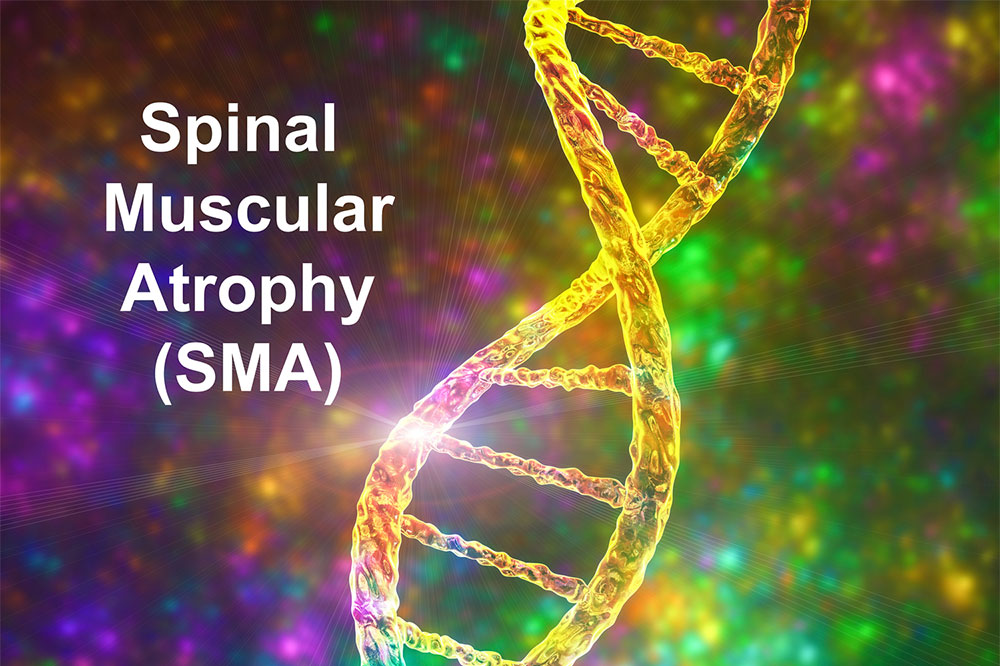
Spinal muscular atrophy – causes, symptoms and physical therapies
Spinal muscular atrophy (SMA) is a health condition that results in weakened muscles and atrophy, which is a decrease in muscle size. It is a genetic disorder that affects the central nervous system, voluntary muscle movement, and peripheral nervous system. The condition is rare and affects one out of 6,000 to 10,000 children every year. As of today, there are 10,000 to 25,000 children in the country who live with SMA.
Cause
The most common cause of spinal muscular atrophy is when children have two copies of broken genes, one from each parent. The defective genes prevent the body from producing sufficient amounts of the survival motor neuron (SMN) protein needed to maintain regular function and overall health of the neurons. The lack of protein leads to the deterioration and elimination of the cells that control muscle growth, ultimately leading to disorders.
Symptoms
The symptoms of spinal muscular atrophy depend on its type. There are four primary types of SMA range: severe (Type 1), intermediate (Type 2), mild (Type 3), and adult (Type 4).
The primary symptom of the disorder is the weakness of the voluntary muscles. Affected individuals will find that the muscles closer to the center of their body are the most affected. These include muscles of the hips, thighs, upper back, and shoulder. The lower limbs in the body may be at a higher risk of muscle weakness.
Further complications might occur if the muscles for swallowing and breathing get affected; it may lead to the development of abnormalities. Furthermore, weaker back muscles may lead to scoliosis (formation of curvatures in the spine). Other symptoms of SMA include limited movement, reduced muscle tone, and uncontrolled tongue movements.
Treatment options
While there is no permanent cure for spinal muscular atrophy, there are treatment options to manage the condition and prevent complications.
Gene therapies
SMN1 and SMN2 genes instruct the body to make a protein that helps control muscle movement. Patients with SMA cannot produce sufficient SMN protein, which may result in the inappropriate function of motor neurons. Therefore, the Food and Drug Administration (FDA) has approved three forms of gene therapy to help people manage the disorder.
- Spinraza (Nusinersen)
Spinraza is a survival motor neuron-2 (SMN2)-directed antisense oligonucleotide. The therapy is preferred to treat spinal muscular atrophy (SMA) in children and adults. Spinraza is administered directly into the space between the affected layers of tissue of the spinal cord. The initial treatment requires four doses; three doses are administered over 14-day intervals, while the fourth is given 30 days after the third dose. A follow-up dose is also needed every four months for the therapy to remain effective. - Zolgensma (onasemnogene abeparvovec-xioi)
Children below the age of two years with spinal muscular atrophy may benefit from this form of gene therapy. Zolgensma is given over a sixty-minute, one-time infusion into a vein. The gene therapy replaces the deteriorated SMN1 gene by transferring a healthy copy of the SMN gene through the intravenous tube. During the procedure, the gene is transferred into a specific group of motor neuron cells to improve healthy SMN protein levels. Children who receive the treatment may find it easier to sit without support and notice improved control of head movements. - Evrysdi (Risdiplam)
The prescription is given to children and adults for the treatment of SMA. Evrysdi helps prevent the SMN2 genes from affecting the production of protein, enabling the said protein to approach the nerve cells and maintain regular muscle movement. The treatment is administered orally, once a day after a meal as directed by the doctor. The recommended dosage of Evrysdi depends on the age and body weight of the patient.
Patients must be aware of the side effects of gene therapy. A few common side effects include fever, vomiting, and constipation. Several other side effects can also be severe, so it’s advisable to speak to a doctor before starting the therapy.
Physical therapies
Indulging in physical therapies can also help manage SMA in children and adults. A few therapies to maintain physical strength include:
- Swimming
People with type 4 SMA may benefit from swimming. It promotes and maintains a range of motion and prevents contractures. Children with type 2 to type 3 SMA can enjoy activities in the pool with the guidance and support of a therapist or a family member. Indulging in such water activities can take the pressure off the joints and make it easier for these kids to move their legs and arms with an improved range of motion. - Walking
Patients with type 3 and type 4 SMA may benefit from walking. Activity is a cardiovascular exercise that can improve heart and bone health. Kids who require assistance to stay upright should try using a walker. - Yoga
Yoga is a preferred therapy by many individuals when it comes to relaxation. Practicing such techniques can promote mediation and deep breathing. Yoga also supports moving, changing positions, and stretching, which benefits and opens up muscles in the body. Elongated muscles will help prevent contractures and improve joint movement. - Biking
Stationary bikes are effective methods of dealing with SMA. The therapy is a suitable weight-bearing exercise that helps stretch the muscles in the arms and legs. However, the level of impact of the activity depends on the affected individual’s strength. - Blowing bubbles
While the therapy is simple, it is reliable and helps those (especially children) with SMA. One must help the child stand or sit upright. After this, they must encourage the child to use their respiratory muscles to blow bubbles. The therapy will help aid and improve lung function.